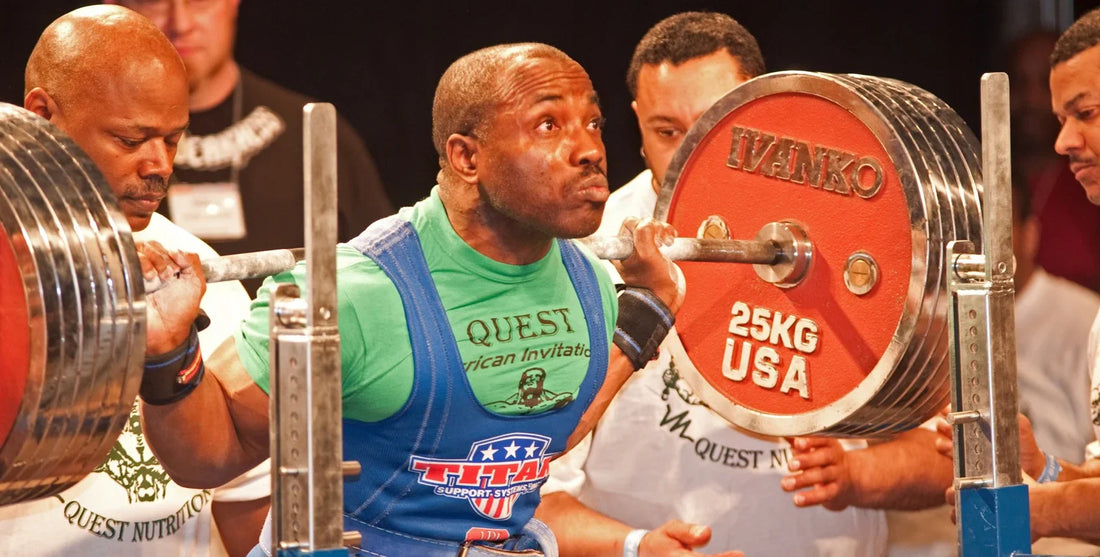
The Powerlifter's Macrocycle: Planning Your Training Year for Peak Performance
Serious powerlifters don't just think about their next workout; they think about their next year. A macrocycle, or an annual training plan, is the long-term roadmap that guides a lifter from the off-season to the competition platform. It involves strategically organizing your training into distinct phases (mesocycles) to manage fatigue, build specific qualities, and ensure you peak at the right time. This guide will break down the components of a powerlifting macrocycle to help you plan your year like an elite athlete.

The Big Picture: Why Plan a Full Year?
Planning your training on a yearly scale allows you to:
- Prioritize Competitions: Select your main "A" meets and work backward to create a logical progression.
- Manage Long-Term Fatigue: Prevents the cumulative burnout that can come from being in a constant state of "prep."
- Systematically Build Strength: Dedicate specific periods to building muscle (hypertrophy), realizing strength, and peaking, rather than trying to do everything at once.
- Create Structure: It provides a clear, long-term vision for your training, which can be incredibly motivating.
- The Phases of a Powerlifting Macrocycle
A typical macrocycle is built around one or two main competitions per year and can be broken down into these key phases.
Phase 1: The Off-Season / General Preparatory Phase (GPP)
- When: The period furthest out from a competition, often after a post-meet recovery phase.
- Duration: Can last anywhere from 8 to 20+ weeks.
-
Primary Goal: Build your foundation. This is not about 1-rep maxes. The focus is on:
- Hypertrophy: Adding new muscle mass. A bigger muscle has a higher strength potential.
- Work Capacity: Improving your ability to handle training volume.
- Addressing Weaknesses: Hammering your accessory exercises and bringing up lagging muscle groups.
- Training Style: High volume, moderate intensity. This is the time for bodybuilding-style work, exercise variation (like box squats or different bar types), and improving your GPP with cardio.
Phase 2: The Pre-Competition / Strength Phase
- When: The block of training leading into your specific meet prep.
- Duration: Typically 4-8 weeks.
- Primary Goal: Convert the new muscle from the off-season into usable strength.
- Training Style: The volume begins to decrease while the intensity (% of 1RM) starts to climb. Training becomes more specific to the competition lifts. You'll be working in lower rep ranges (3-6 reps) and focusing on moving heavy weight with good technique.
Phase 3: The Competition Phase (Meet Prep)
- When: The final 8-12 weeks before your competition.
- Primary Goal: Peak your strength for a single, maximal performance on meet day.
-
Training Style: This phase is characterized by high intensity and high specificity.
- Specificity: Training will consist almost exclusively of the competition squat, bench, and deadlift, performed to competition standards.
- Intensity: You will be handling weights at or above 90% of your 1RM.
- The Taper: The final 1-3 weeks involve a sharp reduction in volume to shed fatigue and allow for supercompensation. Our Final Week Prep Guide covers this in detail.
Phase 4: The Transition / Recovery Phase
- When: Immediately following a competition.
- Duration: 1-4 weeks.
- Primary Goal: Physical and mental recovery.
- Training Style: As detailed in our Post-Meet Recovery Guide, this involves a period of active recovery, light training with lots of variety, and a mental break from the barbell.
This long-term planning model is a cornerstone of sports science, advocated by authorities like the National Strength and Conditioning Association (NSCA) for optimizing athletic performance.
Stop thinking workout-to-workout and start thinking season-to-season. By structuring your year into distinct training phases with specific goals, you can move beyond the cycle of constant grinding and start building strength strategically. A well-planned macrocycle is your roadmap to long-term progress, better health, and peak performance when it matters most.
How do you structure your training year? Do you plan around specific competitions? Let us know in the comments!








